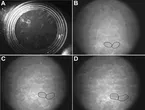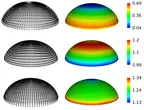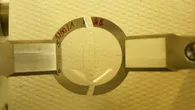Experimental (Bio-)Mechanics: Bioreactor

The mechanical forces acting on lung parenchyma during (mechanical) ventilation and its (patho)physiological consequences are currently under intense scrutiny. Several in vivo and cell culture models have been developed to study the pulmonary responses to mechanical stretch. While providing extremely useful information, these models do also suffer from limitations in being either too complex for detailed mechanical or mechanistic studies, or in being devoid of the full complexity present in vivo (e.g., different cell types and interstitial matrix).
The bioreactor allows us to correlate a two dimensional strain state with reactions on the cellular level. Additionally, we are able to investigate the influence of medication on the cellular reaction.
The bioreactor consists of a lower pressure (1) and an upper supply chamber (2). Both chambers are separated by a specimen-carrying membrane (3) which is fixed in the membrane holder (4). The closure head (8) contains a glass window (5) that allows visual observation of the tissue during mechanostimulation. Up and down-ward deflection of the specimen-carrying membrane (PDMS) (3) is controlled by volume input and output via an inlet (6). Another inlet in the supply chamber (7) allows the provision of tissue nutrition medium.
(in cooperation with Prof. Guttmann and Prof. Uhlig)


